The main espresso machine parts—such as the group head, thermoblocks, steam wand, boiler, pump —each play a vital role in the brewing process.
By knowing what each component does, you can brew better coffee, troubleshoot issues, and maintain your espresso equipment for years of delicious espresso enjoyment.
Key Espresso Machine Components and Their Functions
Group Head (Brew Group / Brew Head)
The group head—sometimes called the brew group or brew head—is where the portafilter locks in.
There are several types of group heads, each with unique features that impact espresso quality and machine performance.
Saturated group heads are directly connected to the boiler, offering exceptional temperature stability and consistency, making them a favorite in commercial settings.
The iconic E61 group head uses a thermosyphon system to circulate hot water and maintain stable temperatures, while also providing mechanical pre-infusion to enhance extraction and flavor.
Integrated or semi-saturated group heads strike a balance between cost and temperature control, making them common in home and prosumer machines.
No matter what types of grouphead your machine has, clean the shower screen regularly is recommended.
Portafilter & Portafilter Basket
The portafilter is the handle with a metal basket that holds the finely ground coffee.
There are different types of portafilters, including single spout, double spout, and bottomless (naked) designs, each offering unique benefits for espresso extraction and shot monitoring.
The portafilter basket inside determines how much ground coffee you use and how many espresso shots you can pull at once, with options such as single, double, triple, pressurized, and non-pressurized baskets.
Common portafilter sizes include 51mm, 54mm, and 58mm, with 58mm being the industry standard for many commercial and high-end home machines, while 51mm and 54mm are frequently found in compact or entry-level models.
*Most HiBREW Espresso Machines use a 58mm commercial size portafilter.
Steam Wand
The steam wand is a metal tube on the side of the machine used to steam milk for lattes and cappuccinos. It injects steam into milk, creating creamy microfoam, and can also dispense hot water for tea or Americanos.
There are several types of steam wands:
Professional-style steam wands are fully metal, often found on commercial and high-end home machines, and feature various tip designs with different numbers of holes—more holes (such as four) allow for faster steaming and are ideal for larger volumes of milk, while fewer holes (like one or two) provide more control and are better for smaller amounts or beginners.
Pannarello wands, commonly seen on entry-level and automatic machines, have a sheath with air intake holes that automatically introduce air into the milk, making frothing easier for beginners but sometimes producing larger bubbles rather than true microform.
No-burn (cool-touch) steam wands have an insulated or double-wall construction that keeps the exterior cool to the touch for added safety and easier cleaning, though some baristas feel they provide less tactile feedback during steaming.
Boiler
The boiler heats and maintains water at the correct temperature for brewing and steaming.
Boilers come in different capacities to suit both home and commercial machines, with larger sizes offering better thermal stability.
They are made from materials like copper, stainless steel, brass, or aluminum, each affecting heat retention and durability.
Some machines use a single boiler, while others feature dual boilers or heat exchangers for simultaneous brewing and steaming, ensuring consistent espresso extraction and milk steaming.
Thermoblock
A thermoblock is an alternative heating system commonly found in many home and compact espresso machines. Instead of storing hot water like a traditional boiler, a thermoblock rapidly heats water on demand as it passes through a heated metal block.
This design offers quick heat-up times, energy efficiency, and a compact footprint, making it ideal for smaller machines. However, thermoblocks may provide less temperature stability compared to dedicated boilers, which can affect the consistency of espresso extraction and steaming.
Pump
The pump creates the pressure—usually around 9 bars—needed to force hot water through the coffee grounds, making it essential for proper espresso extraction.
There are two main types of pumps: Vibration pumps, which are compact, affordable, and common in home machines, and rotary pumps, which are larger, quieter, and provide more consistent pressure, often found in commercial or high-end models. Consistent pump pressure is key to achieving balanced, flavorful espresso shots.
OPV (Over Pressure Valve)
The OPV, or Over Pressure Valve, regulates the maximum brewing pressure in espresso machines, typically keeping it around the ideal 9–10 bars.
By diverting excess pressure back to the reservoir or drip tray, it ensures consistent extraction, prevents bitter flavors, and protects the pump for longer machine life.
3-Way Solenoid Valve
A 3-way solenoid valve releases pressure from the group head immediately after brewing, allowing for safe and easy portafilter removal. It also helps dry out the coffee puck for easier cleaning and prevents messy splashes or backflow, making workflow smoother and maintenance simpler. Check out our guide about 3-way Solenoid Valve here.
Drip Tray
Located beneath the group head, the drip tray collects excess water and coffee drips, keeping your workspace clean. It’s removable for easy cleaning.
Hot Water Tap / Spout
A dedicated hot water tap allows you to dispense hot water instantly, perfect for making Americanos or tea without needing a separate kettle.
Pressure Gauge (Sight Glass)
The pressure gauge displays boiler and brew pressure, allowing you to monitor your machine’s performance. It’s a valuable diagnostic tool for ensuring your espresso shots are extracted at the right pressure.
Bean Hopper & Grinder
If you are using a grind and brew espresso machine like the H7B, you have a built-in grinder. The bean hopper stores your coffee beans and feeds them into the grinder. Freshly ground coffee is essential for quality espresso, and the grinder lets you adjust the grind size and dose for each shot.
How Espresso Machine Parts Work Together
Here’s how the main espresso machine parts interact during the brewing process:
- Coffee beans are placed in the bean hopper and ground to the desired fineness. (If you are using an espresso machine with grinder)
- Finely ground coffee is placed in the portafilter basket, tamped, and locked into the group head.
- The pump pushes hot water from the boiler through the group head and portafilter, extracting the espresso shot.
- The steam wand is used to steam milk or dispense hot water for other drinks.
- The drip tray and pressure gauge help you maintain cleanliness and monitor machine performance.
Automatic Espresso Machines vs. Manual Machines
Automatic espresso machines simplify the brewing process, controlling water volume, pressure, and sometimes grinding and tamping. They’re convenient for busy users or beginners.
Manual and semi-automatic machines give you more control over each variable, allowing you to fine-tune your espresso to perfection.
Maintaining and Replacing Espresso Machine Parts
Regular cleaning and maintenance of your espresso machine parts are essential for consistent performance and great-tasting espresso.
Focus on key components like the portafilter, group head, steam wand, and grinder.
If you are using a machine with a 3-way solenoid valve, black flushing is a deep cleaning method that removes coffee oils and residues from the group head, improving flavor and machine hygiene.
Descaling removes mineral buildup inside the machine, protecting internal parts and ensuring proper heating and water flow. When replacing parts, always check compatibility with your machine and choose high-quality components for the best results. We explained how to descale an espresso machine in our previous post.
Espresso Machine Parts Quick Reference Table
|
Part |
Function |
Why It Matters |
|---|---|---|
|
Group Head |
Delivers water for brewing |
Even extraction, flavor |
|
Portafilter/Basket |
Holds ground coffee for extraction |
Essential for espresso shot |
|
Steam Wand |
Steams milk, dispenses hot water |
For lattes, cappuccinos, hot water |
|
Boiler & Thermoblocks |
Heats and maintains water temperature |
Consistent brewing/steaming |
|
Pump |
Pressurizes water |
Proper extraction |
|
Drip Tray |
Collects spills/drips |
Cleanliness, easy cleanup |
|
Hot Water Tap |
Dispenses hot water |
Versatility for drinks |
|
Pressure Gauge |
Monitors pressure |
Diagnostic tool |
|
Bean Hopper/Grinder |
Stores and grinds coffee beans |
Freshness, grind consistency |
Conclusion: Master Every Part of Your Espresso Machine
Understanding espresso machine parts is the key to brewing better coffee, maintaining your equipment, and enjoying café-quality drinks at home. From the group head and portafilter to the steam wand and boiler, every component plays a vital role in the brewing process. Invest in quality parts and regular maintenance to enjoy delicious espresso for years to come.
Ready to upgrade your espresso machine parts? Explore Hibrew’s collection and take your coffee to the next level.

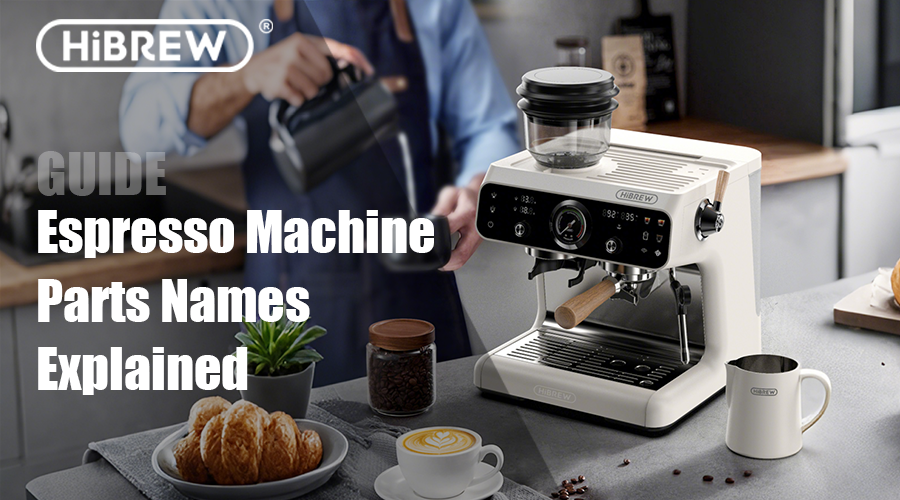
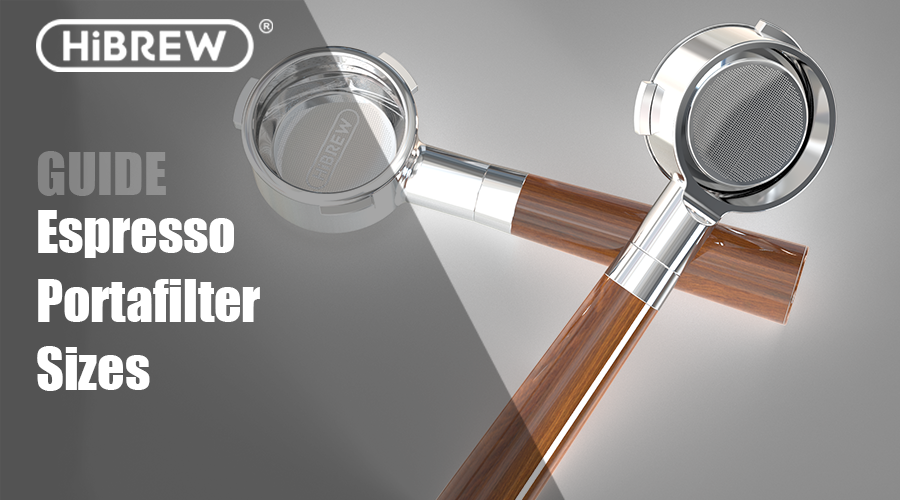
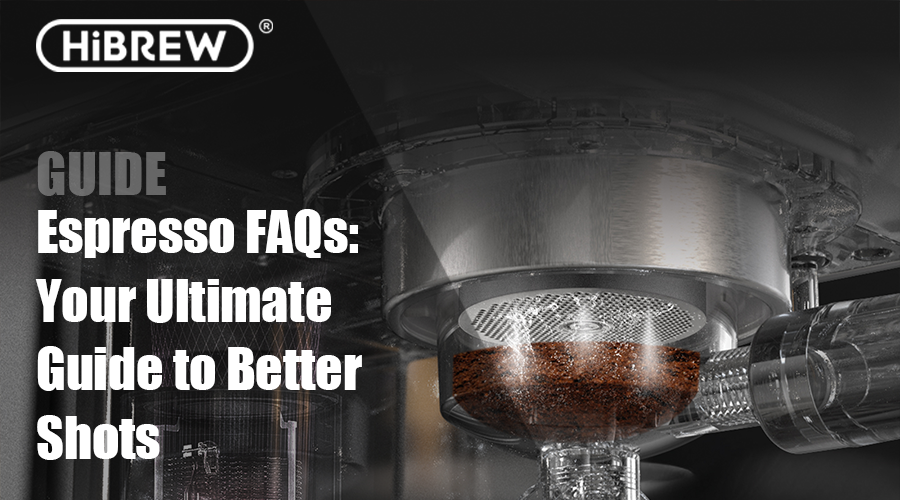
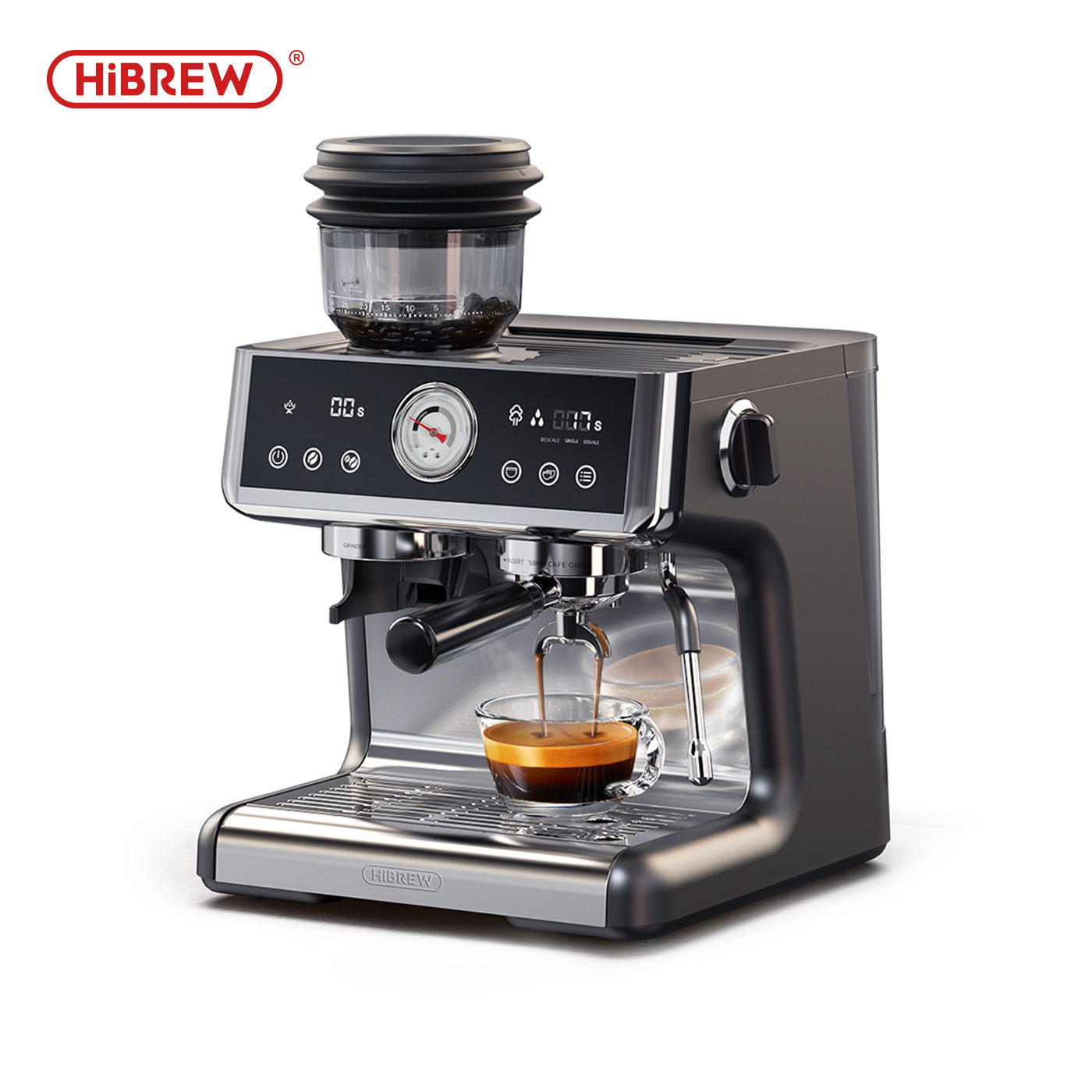
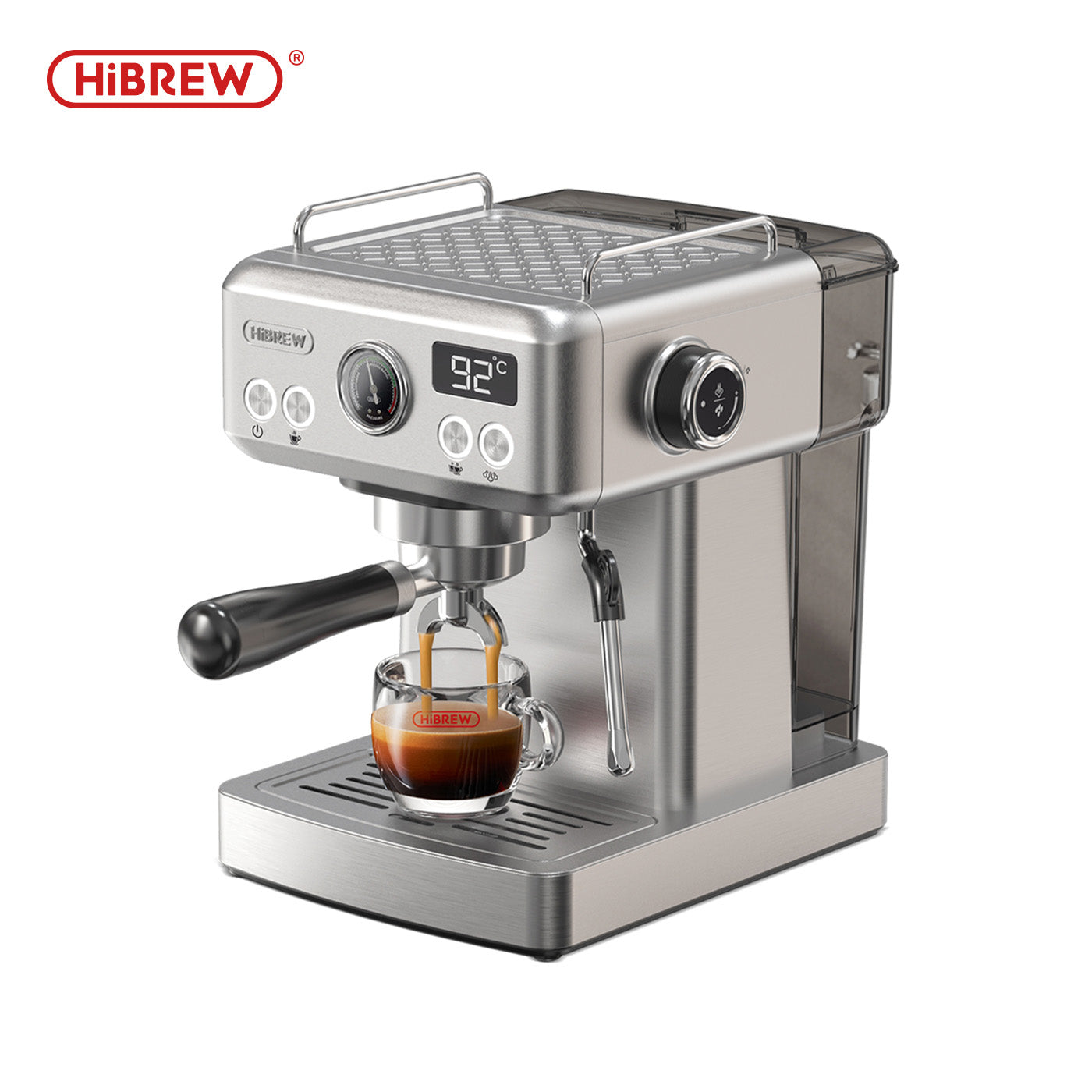

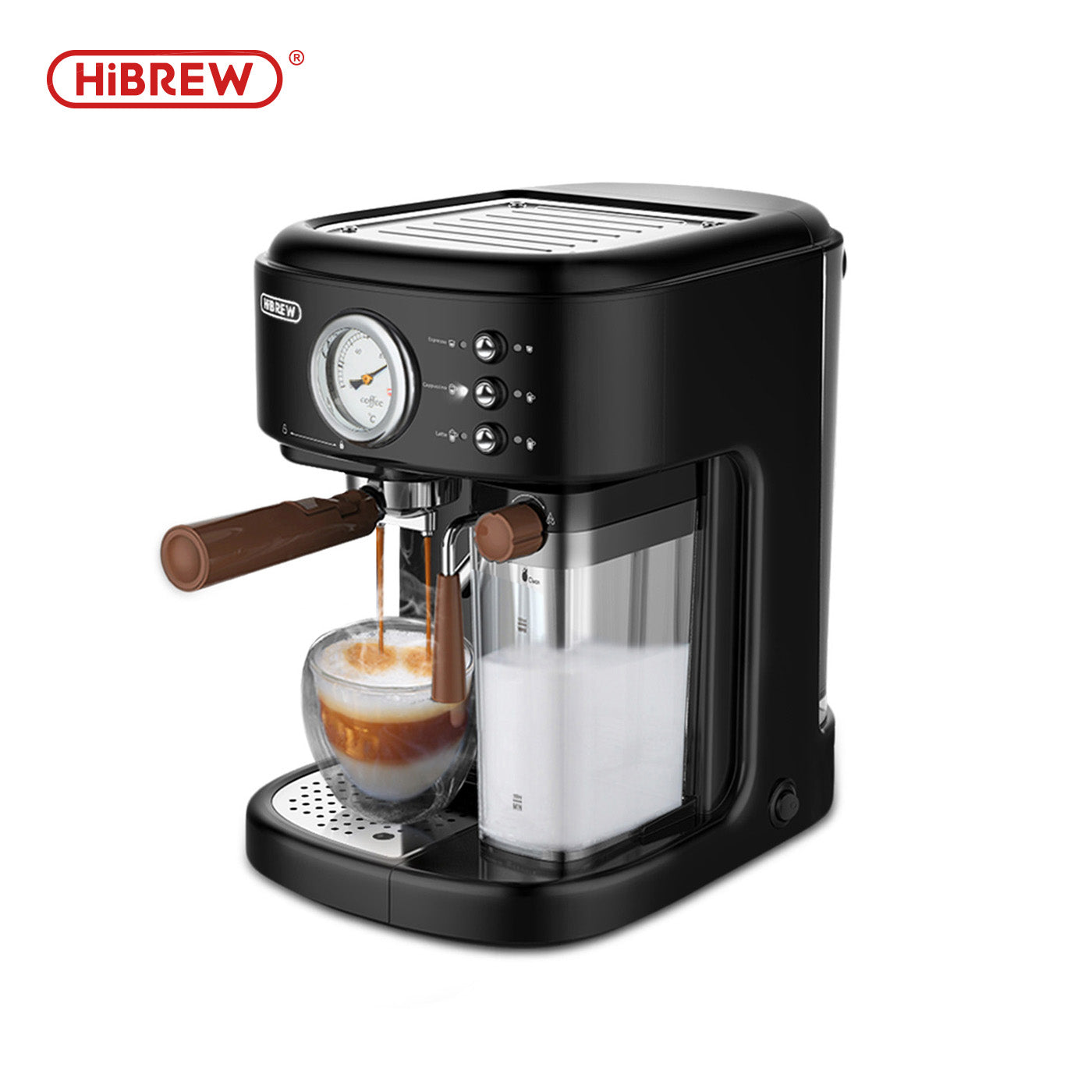
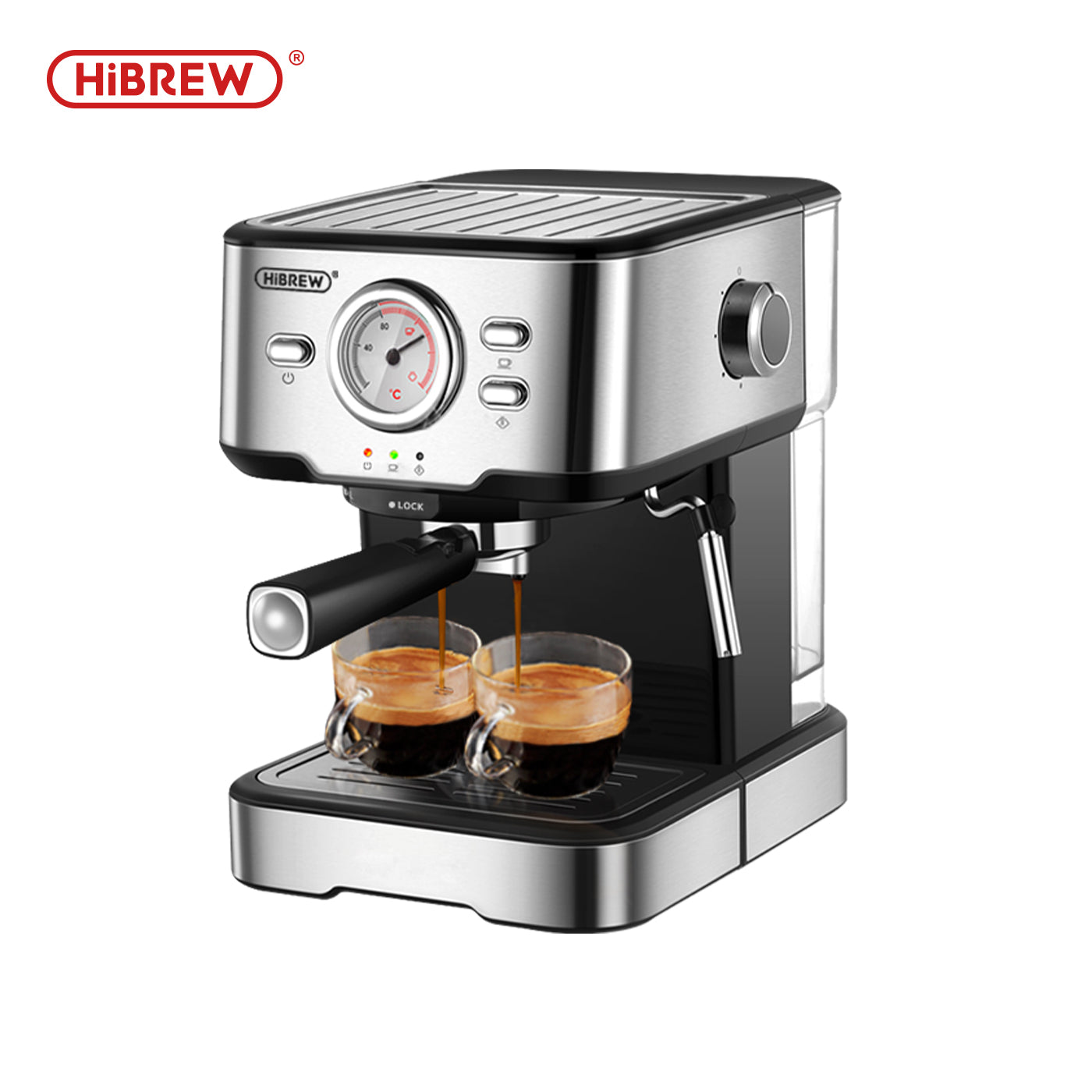
Dejar un comentario
Todos los comentarios se revisan antes de su publicación.
Este sitio está protegido por hCaptcha y se aplican la Política de privacidad de hCaptcha y los Términos del servicio.